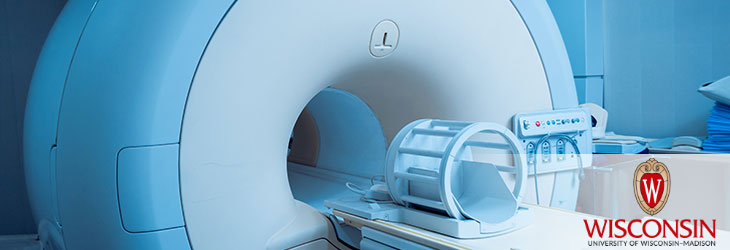Radiation Therapy

Correction of Inverse Consistency and Transitivity Errors in Deformable Image Registration
WARF: P110232US01
Inventors: Wolfgang Tome, Edward Bender, Nicholas Hardcastle
The Wisconsin Alumni Research Foundation (WARF) is seeking commercial partners interested in developing a corrective strategy to minimize discrepancies resulting from inverse-inconsistent and non-transitive deformation vector fields in radiotherapy dose accumulation.
Overview
In radiation therapy, particularly with 4-D planning and adaptive radiotherapy, multiple images almost always are acquired and utilized as part of the therapy. A treatment plan is defined on an image of the patient and used to align and control radiation beams during treatment. The dose received by each region of tissue during each treatment fraction is monitored. The registration of the treatment plan with the patient and the monitoring of radiation dose over time are complicated by changes in the patient and target over time. It is common to obtain new images of the patient at the time of each treatment fraction.
Deformable image registration (DIR) is necessary for accurate dose accumulation between multiple radiotherapy image sets. DIR algorithms can exhibit inverse and transitivity inconsistencies, which cause differences in accumulated dose from different image pathways. Differences in accumulated dose may impact clinical decisions. Deformation algorithms to reduce inverse consistency and transitivity errors exist; however, there is a need for post-processing techniques that minimize inconsistencies in accumulated doses.
Deformable image registration (DIR) is necessary for accurate dose accumulation between multiple radiotherapy image sets. DIR algorithms can exhibit inverse and transitivity inconsistencies, which cause differences in accumulated dose from different image pathways. Differences in accumulated dose may impact clinical decisions. Deformation algorithms to reduce inverse consistency and transitivity errors exist; however, there is a need for post-processing techniques that minimize inconsistencies in accumulated doses.
The Invention
UW–Madison researchers have developed a correction algorithm that forces inverse consistency and transitivity between all deformation vector fields used in dose accumulation. The algorithm provides flexible image deformation that is largely indifferent to the sequence of deforming step and does not require transformation through a particular image. These results are accomplished by ensuring individual deformation maps are inverse consistent, for example, by use of a correlation algorithm or an averaging process. Transitive deformation maps are produced by combining inverse-consistent deformation maps for combinations of different deformation pathways between the same endpoint images. The resulting system allows arbitrary deformation of image-type data among images with consistent results when the deformation endpoints are the same.
Applications
- Dose-guided radiotherapy
Key Benefits
- Allows flexibility in changing the registration of image-type data among different images in arbitrary sequences
- Reduces the difference between doses accumulated on the same image via different image pathways
- Improves accuracy of delivered dose accumulation
Publications
- Bender E., Hardcastle N. and Tome W. 2012. On the Dosimetric Effect and Correction of Inverse Consistency and Transitivity Errors in Dose Accumulation. Med. Phys. 39, 272.
Tech Fields
For current licensing status, please contact Jeanine Burmania at [javascript protected email address] or 608-960-9846